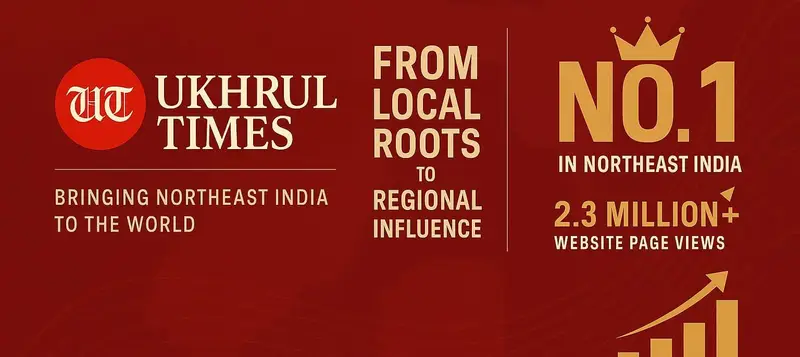Now Reading: Nagaland: The Carbon Credit Frontier Attracting Global Investment and Opportunities for Inclusive Growth
-
01
Nagaland: The Carbon Credit Frontier Attracting Global Investment and Opportunities for Inclusive Growth
Nagaland: The Carbon Credit Frontier Attracting Global Investment and Opportunities for Inclusive Growth

In recent months, Nagaland has emerged as a hotspot for international investment, with the Japanese government and the World Bank leading the charge. This surge of interest can be traced back to Nagaland’s vast forests, which offer immense potential in the carbon credit market. A viral Twitter thread has broken down this complex topic, shedding light on why the world’s eyes are suddenly on this small northeastern state.
The Paris Agreement and the Global Push for Net Zero
The foundation for this interest was laid in 2015 when 195 nations united in Paris to sign the historic Paris Agreement at the UN Climate Change Conference (COP21) on 12 December 2015. This global pact aimed to reduce carbon emissions to combat climate change, with the goal of achieving net-zero emissions by 2050. As part of this effort, countries that exceed their emission limits must offset their pollution by investing in emission-reducing activities, such as forest conservation. Carbon credits are a key component of this system. For every ton of CO2 that a forest removes from the atmosphere, it generates one carbon credit, which can be sold to countries or companies looking to offset their emissions.

According to the Twitter user Ash, who goes by @Broski_Ash, this is where Nagaland’s forests come into play. “Nagaland today is sitting on one of the largest gold mines of these credits,” Ash explains, pointing to the state’s vast, lush green forests as its most valuable asset in the fight against climate change.
Nagaland’s Forests: A Carbon Credit Goldmine
Nagaland boasts over 600,000 hectares of forest, which could potentially generate up to 150 million carbon credits per year. Even at a conservative estimate of $10 per credit, this would equate to $1.5 billion (₹12,500 crores) annually. However, Ash points out that the real market price for carbon credits in Europe has already crossed €100 per ton, making this estimate significantly conservative.

The unique ownership structure of Nagaland’s forests further enhances its attractiveness. Unlike most other Indian states, 88% of Nagaland’s forests are privately owned, thanks to customary law protections under Article 371A of the Indian Constitution. This ensures that the profits from carbon credits rightfully belong to the people who own the land, not the government. As he aptly states, “The benefits from the forests should belong to those who own them.“

Global Interest and Local Challenges
The potential for massive carbon credit earnings has sparked the interest of countries like Japan, Germany, and the US, with millions already being invested in Nagaland. For instance, a state-of-the-art GIS center has been established in the state to support carbon credit projects. But as promising as this sounds, Ash raises concerns over the distribution of profits.
In a pilot project in Tseminyu district, the local population is earning just $1 (₹74) per carbon credit, despite the growing global value of these credits. The reason, according to him, is the structure of these projects, which is similar to carbon forest initiatives in places like Sikkim and Honduras. Most of the profits are being siphoned off by foreign investors who provided initial funding.

This has led to growing fears that Nagaland could fall victim to what economists call the “resource curse,” where countries rich in natural resources experience slow economic growth and higher poverty due to corruption and overdependence on a single resource. Nations like Nigeria and Venezuela serve as cautionary tales, where the political elite and foreign corporations have reaped the benefits of natural resource extraction, while the local population remains impoverished.
Avoiding the Resource Curse: Lessons from Norway and Gabon
Fortunately, there are successful models that Nagaland can emulate. Norway is a prime example of a country that avoided the resource curse after discovering oil. Instead of letting foreign corporations control their resources, Norway pooled its oil earnings into a central fund that benefits all citizens. Today, this fund is worth over $1.4 trillion, with each Norwegian citizen having a significant share of their nation’s wealth.
Similarly, Gabon has developed a centralized system for managing its carbon credits, ensuring that every citizen benefits from the country’s natural resources. Ash suggests that if Nagaland were to adopt a similar approach, the state could earn ₹12,500 crores annually, which could translate to ₹56,818 for every resident. If carbon prices hit $100 per ton, that figure could rise to as much as ₹5.7 lakhs per person per year. Such a system could potentially create a form of universal basic income for the people of Nagaland.
Building a Prosperous Future: Opportunities in MSMEs and Horticulture
The Twitter thread also emphasizes the broader economic opportunities tied to forest conservation. Nagaland’s partnership with the World Bank, through initiatives like the RAMP project, is designed to provide funding for young entrepreneurs and MSMEs (Micro, Small, and Medium Enterprises). By starting businesses related to horticulture, food processing, cold storage, and sustainable forest management, locals can create jobs that contribute to forest conservation efforts.

Additionally, the state’s rich biodiversity presents numerous opportunities for auxiliary and ancillary businesses. These could range from drone-based forest fire prevention and tree nurseries for reforestation to IoT-based wildlife fencing and sustainable charcoal production. As Ash notes, “The possibilities are endless.”
However, before Nagaland can fully capitalize on these opportunities, it must first address its infrastructure challenges. Reliable electricity, roads, and water systems are essential for these businesses to thrive, and investment in these areas will be crucial to the state’s success.
The Role of Japan: A Perfect Ally for Nagaland
Japan has emerged as a key partner in Nagaland’s development efforts. With 75% of Japan’s landmass being hilly, the country has extensive experience in overcoming infrastructure challenges in difficult terrain. This makes Japan an ideal ally in Nagaland’s efforts to build roads, water systems, and electrical connections in its rugged landscape.
Japan’s involvement also extends to helping Nagaland develop a long-term strategy for carbon credits and forest management. The partnership between the two regions is seen as a model for sustainable development that balances environmental protection with economic growth.
Conclusion: The Road Ahead for Nagaland
Nagaland stands at a pivotal moment in its history, with the potential to become a global leader in carbon credits and climate finance. However, the state must carefully navigate the risks associated with foreign investment and ensure that its natural resources benefit all its people, not just a select few. By learning from successful models like Norway and Gabon, and by leveraging its partnerships with nations like Japan, Nagaland can build a prosperous, sustainable future.
The world is watching, and with the right policies and cooperative efforts, Nagaland could become a beacon of hope for sustainable development and economic equity.
This article is extracted from the twitter thread of @broski_Ash
The article was first published in Northeast Mint
(This is not a Ukhrul Times publication. UT is not responsible for, nor does it necessarily endorse, its content. Any reports or views expressed are solely those of the author or publisher and do not necessarily reflect those of Ukhrul Times.)

















